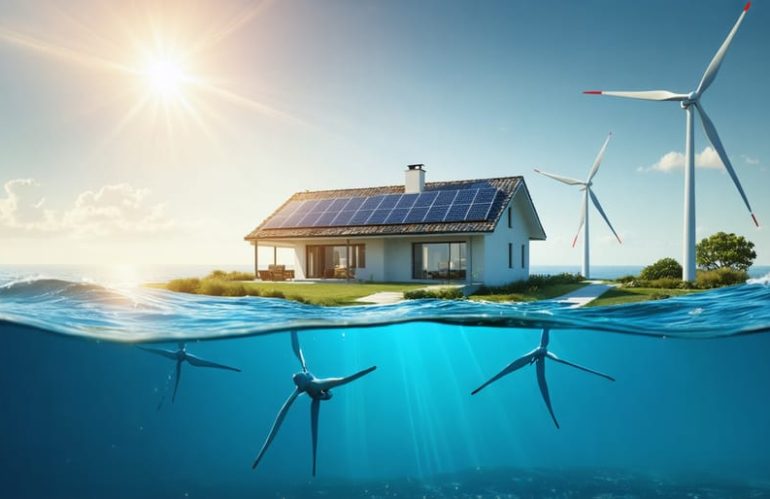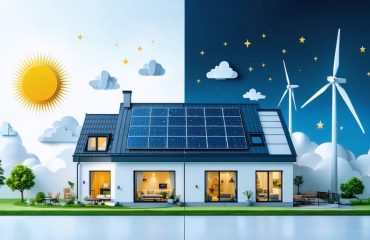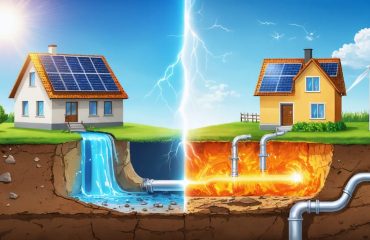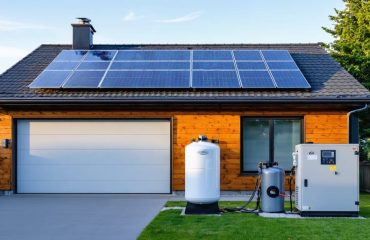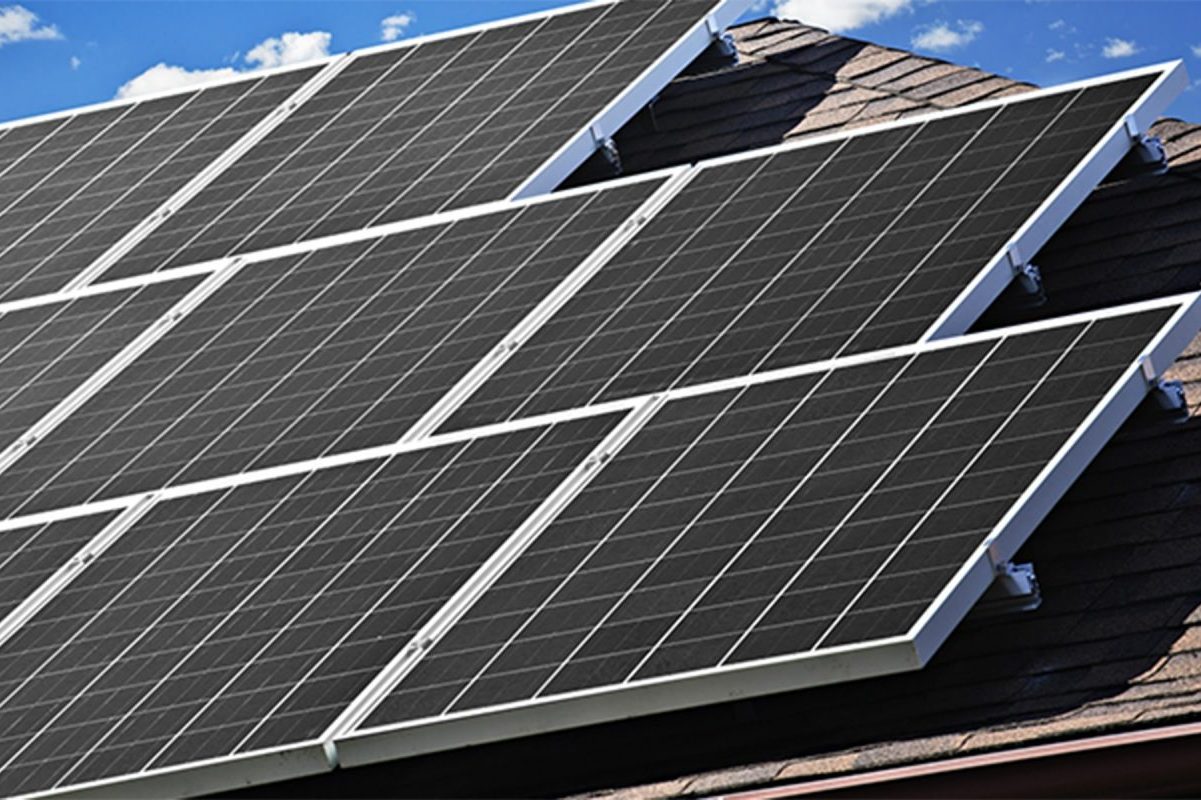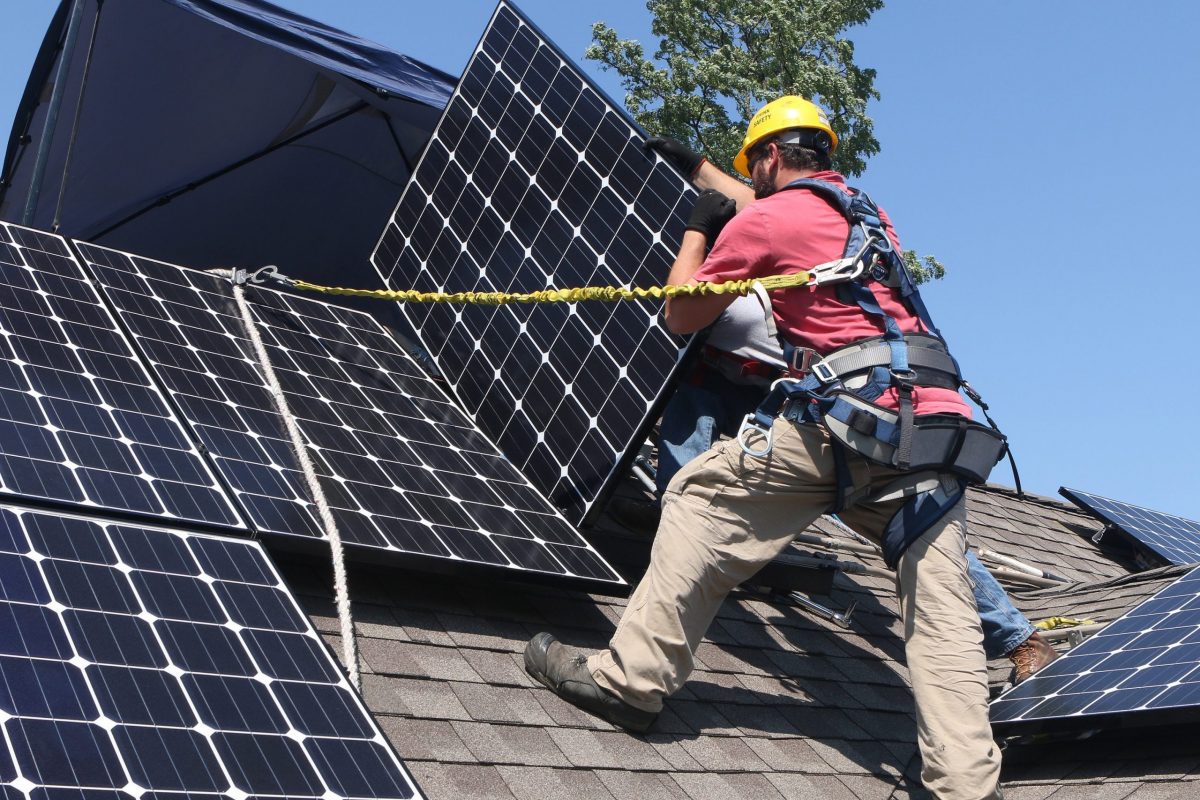Harness the untapped power of ocean tides to revolutionize your home’s energy system and dramatically reduce your carbon footprint. As coastal homeowners increasingly seek sustainable alternatives to traditional power sources, tidal energy emerges as a groundbreaking solution that works in perfect harmony with existing solar installations. This innovative technology captures the predictable, twice-daily surge of ocean tides, converting their immense kinetic energy into clean, reliable electricity for residential use.
Unlike solar panels that depend on daylight hours, tidal energy systems operate 24/7, providing a consistent power supply that can complement your home’s existing renewable energy setup. By integrating tidal power with solar systems, coastal homeowners can achieve unprecedented energy independence while contributing to ocean conservation efforts. The combination of these two renewable sources creates a robust, environmentally-friendly power solution that not only slashes electricity bills but also helps preserve our marine ecosystems for future generations.
Modern tidal energy systems have evolved to become more compact, efficient, and suitable for residential installation, making them an increasingly attractive option for environmentally conscious homeowners living along coastlines. This breakthrough in sustainable energy technology represents a significant step forward in the journey toward complete household energy independence.
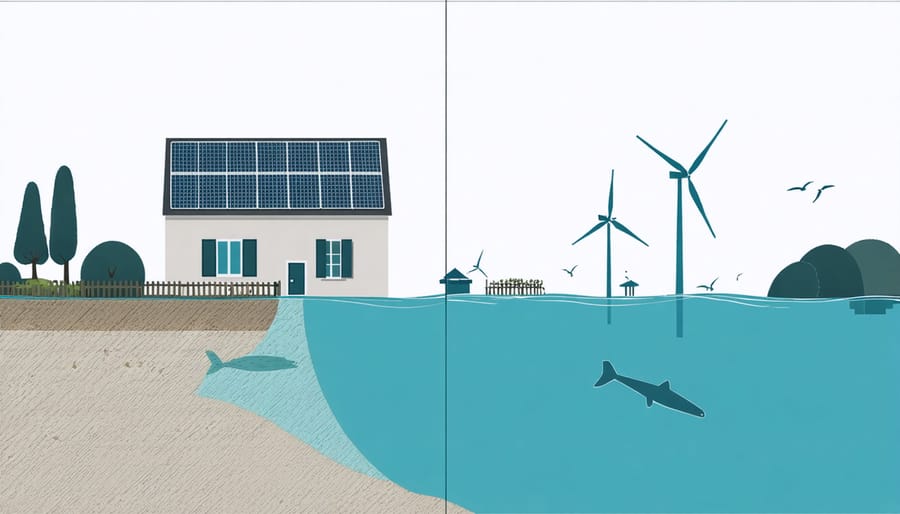
How Solar-Tidal Systems Transform Coastal Energy
The Power of Predictable Tides
Unlike solar power that depends on sunshine or wind energy that relies on weather patterns, tidal energy offers something uniquely valuable: predictability. Tides follow precise astronomical patterns, making them one of the most reliable renewable energy sources available. We can forecast tidal movements years, even decades in advance, allowing for precise energy generation planning.
This predictability perfectly complements solar power systems. While solar panels generate energy during daylight hours, tidal turbines can continue producing electricity throughout the night. During periods of low sunlight or cloudy weather, tidal energy maintains a steady power output, helping to balance the overall energy supply.
The ocean’s tides are also more powerful than many realize. Water is about 830 times denser than air, meaning tidal currents pack significantly more energy than wind, even at lower speeds. This density allows tidal turbines to generate substantial power from seemingly gentle water movements, providing consistent energy output for coastal communities throughout the day and night.
Solar’s Role in the Hybrid System
Solar panels play a vital complementary role in hybrid tidal energy systems, creating a powerful duo for consistent power generation. While tidal energy provides predictable power based on ocean movements, solar panels harness energy during daylight hours, effectively filling the gaps between tidal cycles. This combination, when paired with modern energy storage solutions, creates a more reliable and efficient renewable energy system.
During peak sunlight hours, solar panels can generate substantial power while tidal turbines continue their steady production. This dual-generation approach not only increases the overall energy output but also reduces dependency on a single power source. The beauty of this system lies in its natural complementarity – when tidal energy might be at a lower output during certain tide cycles, solar power can step in to maintain consistent energy supply.
For coastal homeowners, this hybrid approach offers the best of both worlds: the reliability of tidal energy combined with the proven effectiveness of solar technology. The result is a more stable and sustainable power supply that maximizes renewable energy potential throughout the day.
Real Benefits for Coastal Homeowners
Consistent Power Generation
One of the most compelling advantages of tidal energy is its remarkable predictability. Unlike other renewable sources, tidal movements follow precise patterns dictated by lunar cycles, making power generation highly reliable and calculable years in advance. This consistency addresses a common concern with renewable energy: intermittency.
Ocean tides occur twice daily in most locations, ensuring regular power generation cycles. Even when the sun isn’t shining or the wind isn’t blowing, tidal turbines continue producing electricity, providing a dependable baseline power supply. This predictability makes tidal energy an excellent complement to other renewable sources, helping to maintain stable grid operations.
What’s particularly impressive about tidal power is its efficiency during peak flow periods. During these times, tidal currents can generate up to four times more energy than wind turbines of similar size. The water’s density, being 832 times greater than air, allows tidal turbines to capture more energy even at lower speeds.
The combination of regular tidal cycles and the ocean’s powerful forces means coastal communities can rely on consistent power generation throughout the year. This reliability reduces dependence on backup power systems and helps stabilize electricity costs for consumers. For areas with suitable tidal resources, this translates to a steady, renewable power source that operates day and night, regardless of weather conditions.
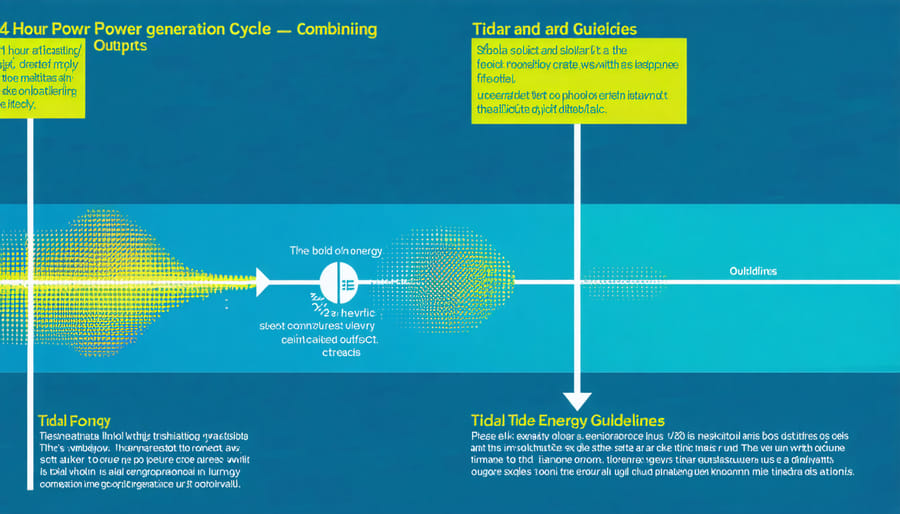
Cost Savings and ROI
While the initial investment in tidal energy systems can be substantial, the long-term cost savings and return on investment make it an attractive option for coastal communities and homeowners. On average, a residential-scale tidal energy system can pay for itself within 8-12 years, depending on local electricity rates and tidal conditions.
The most significant financial benefit comes from reduced electricity bills, with many households reporting savings of 40-60% on their monthly energy costs. When combined with other renewable energy sources, these savings can increase to 70-80%. Additionally, many governments offer tax incentives, grants, and rebates for installing tidal energy systems, which can significantly reduce the initial installation costs.
Maintenance costs are relatively low compared to other renewable energy systems, typically requiring annual inspections and minimal parts replacement every 5-7 years. The durability of modern tidal turbines means they can operate effectively for 20-25 years, providing consistent returns throughout their lifetime.
Property values also tend to increase with the installation of tidal energy systems, offering an additional financial benefit. Studies show that homes with renewable energy systems command a 4-6% premium in the real estate market. Moreover, as electricity prices continue to rise, the value proposition of tidal energy becomes even more compelling, with ROI potentially accelerating in the coming years.
Installation and Integration
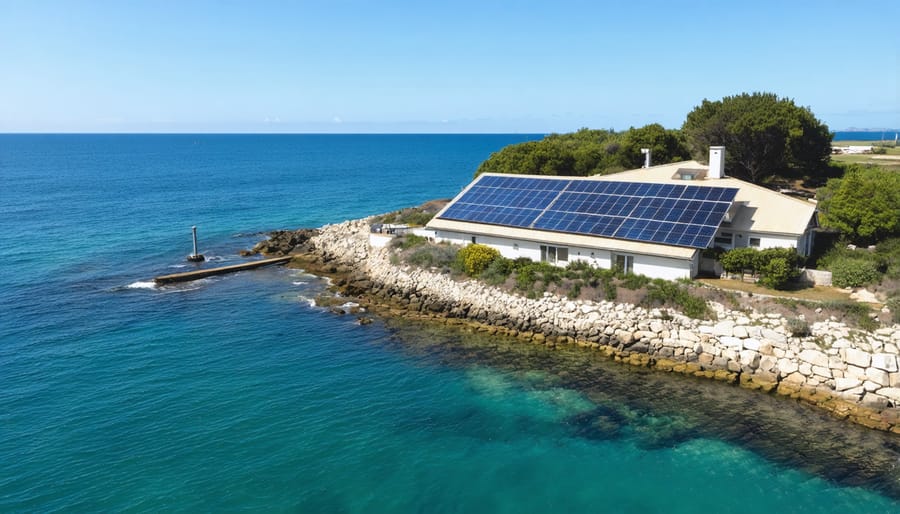
System Requirements
To harness tidal energy effectively, several key site requirements must be met. First and foremost, the location should have a minimum tidal range of 16 feet (5 meters) to generate sufficient power. Coastal areas with narrow inlets or channels typically offer the best potential, as they naturally amplify tidal flows.
Water depth is another crucial factor, with ideal depths ranging between 65 to 100 feet (20-30 meters). This allows for proper installation of turbines while minimizing environmental impact. The seabed composition should be stable and suitable for anchoring equipment, preferably consisting of rocky or dense sandy material.
Like other sustainable home power systems, tidal energy installations require specific infrastructure considerations. A robust grid connection point must be available within reasonable distance to minimize transmission losses. The site should also be accessible for maintenance vessels and have sufficient space for onshore support facilities.
Environmental factors play a vital role in system requirements. The location must have minimal impact on marine ecosystems and shipping lanes. Regular environmental assessments are necessary to ensure compliance with local regulations and protect marine life.
For residential applications, proximity to the coastline is essential to reduce infrastructure costs. The system should include monitoring equipment to track tidal patterns and power generation. Additionally, backup power systems are recommended to maintain consistent energy supply during periods of lower tidal activity.
Weather resistance is crucial, with all components designed to withstand saltwater exposure, strong currents, and extreme weather conditions. Regular maintenance schedules must be established to prevent corrosion and ensure optimal performance.
Professional Installation Process
The installation of a tidal energy system requires careful planning and coordination between multiple professionals. The process typically begins with a comprehensive site assessment, where marine engineers evaluate your coastal property’s tidal patterns, water depth, and environmental impact considerations.
Once approved, the first phase involves securing necessary permits from local authorities and environmental agencies. This typically takes 2-4 months, as tidal energy installations must comply with both maritime and energy regulations.
The next step is preparing the underwater foundation. Specialized diving teams install anchor points and secure the base structure, ensuring it can withstand strong currents and marine conditions. This phase usually takes 1-2 weeks, depending on weather conditions.
Following foundation work, the turbine installation begins. The main turbine unit is carefully lowered into position using marine cranes. Technicians then connect the power transmission cables, which run underwater to connect with onshore electrical systems. This phase typically requires 3-5 days of good weather conditions.
The final phase involves installing the control system and grid connection components on land. Electrical engineers set up the power conditioning unit, monitoring systems, and safety controls. This typically takes 2-3 days to complete.
Throughout the installation, environmental monitoring ensures minimal impact on marine life. Professional installers use special techniques to reduce noise and disturbance during construction. After installation, regular maintenance checks are scheduled to ensure optimal system performance.
The entire process usually takes 3-6 months from initial assessment to final commissioning, though this can vary based on location and system size. Professional installation ensures your tidal energy system operates safely and efficiently for years to come.
Environmental Impact and Sustainability
Carbon Footprint Reduction
Tidal energy systems offer substantial environmental benefits by significantly reducing carbon emissions compared to traditional fossil fuel power generation. When combined with solar installations, these hybrid systems can decrease a household’s carbon footprint by up to 85%, depending on location and system capacity. A typical residential tidal-solar setup can prevent approximately 12-15 metric tons of CO2 emissions annually – equivalent to taking three cars off the road.
The environmental advantages extend beyond carbon reduction. Unlike conventional power plants, tidal energy systems don’t require fuel extraction or transportation, eliminating associated environmental impacts. They operate without producing air pollutants or hazardous waste, and their underwater placement minimizes visual impact on coastal landscapes.
Moreover, modern tidal energy installations are designed with marine life protection in mind. Current technologies use slow-moving turbines and protective screens to prevent harm to aquatic organisms. The structures often create artificial reefs, supporting local marine ecosystems and biodiversity.
When integrated with solar power, these systems provide consistent, clean energy generation throughout the day and night. During peak sunlight hours, solar panels take the lead, while tidal generators maintain power production during nighttime and cloudy conditions. This complementary relationship ensures maximum environmental benefit while maintaining reliable power supply for coastal households.
Future-Proofing Your Home
Investing in tidal energy technology today positions your home for a sustainable tomorrow. As coastal regions face increasing energy demands, tidal power systems offer a reliable and consistent energy source that complements existing solar installations. By combining these renewable sources, homeowners can maximize energy potential while reducing dependence on traditional power grids.
Tidal energy systems are built to last, with many components designed for 20-25 years of operation. Unlike some renewable technologies, tidal turbines require minimal maintenance and continue generating power regardless of weather conditions or time of day. This reliability makes them an excellent long-term investment for coastal properties.
The modular nature of modern tidal systems allows for easy upgrades as technology advances. Many manufacturers now offer scalable solutions that can grow with your energy needs. Additionally, these systems often come with smart monitoring capabilities, enabling homeowners to track performance and optimize energy production over time.
As governments worldwide increase support for renewable energy, early adopters of tidal power may benefit from incentives, tax breaks, and increased property values. The integration of tidal energy also provides a hedge against rising utility costs, offering predictable energy expenses for decades to come. This combination of environmental sustainability and financial stability makes tidal energy an intelligent choice for future-focused homeowners.
As we’ve explored, tidal energy combined with solar power represents an exciting frontier in sustainable home energy solutions. This dynamic duo offers homeowners a reliable and environmentally responsible way to power their homes while significantly reducing their carbon footprint and energy costs. The predictability of tidal patterns, coupled with solar energy’s daytime generation, creates a more consistent power supply than either system alone.
By embracing ocean energy tidal systems alongside solar installations, coastal homeowners can tap into nature’s most powerful forces to achieve greater energy independence. The environmental benefits are clear: reduced reliance on fossil fuels, lower greenhouse gas emissions, and minimal impact on marine ecosystems when properly implemented.
While the initial investment may seem substantial, the long-term savings and environmental benefits make tidal-solar hybrid systems an increasingly attractive option. Government incentives, improving technology, and dropping installation costs are making these systems more accessible than ever before.
Looking ahead, the future of residential energy could well lie in these innovative combinations of renewable sources. If you live in a coastal area, consider exploring how a tidal-solar system could benefit your home. Not only will you be contributing to a more sustainable future, but you’ll also be at the forefront of the clean energy revolution, potentially inspiring others in your community to follow suit.
Take the first step toward energy independence by consulting with renewable energy experts who can assess your property’s potential for tidal and solar energy integration.

